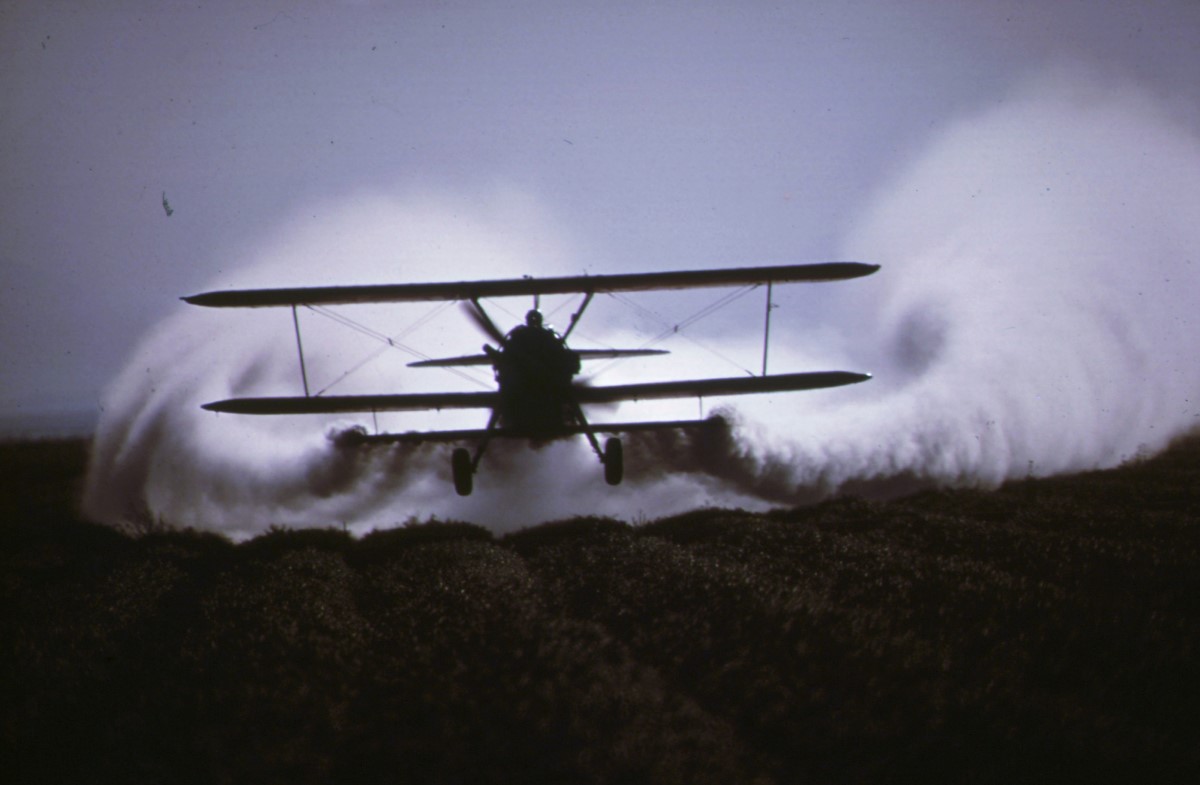
Stanford Hospital Department of Pharmacology faculty expressed opposition to aerial spraying of Malathion to combat Mediterranean fruit fly
In 1980, faculty members in the Stanford University’s Department of Pharmacology publicly expressed their opposition to the proposed aerial spraying of the pesticide Malathion, over 120 square miles of Santa Clara County, to combat the Mediterranean fruit fly. In a letter sent to the mayors of 14 affected cities, the scientists voiced serious reservations about the product, which they said kills by inhibiting an essential enzyme in the nervous system of all animals, not just insects.
Following aerial application of malathion in Santa Clara County, California, in 1981, a survey was conducted to assess the acute health effects of the application. The results showed no significant increase in the number of visits for the broad category, respiratory, to hospital emergency departments during the application period compared with the prespray period or the corresponding period the previous year. Furthermore, there was no significant increase in the number of asthma-related visits to a university medical school in the area, although the numbers in the study may have been too small to provide definite conclusions.
Two reports provided information regarding inhalation exposure to malathion, or to a group of pesticides that included malathion, and death in humans, but no apparent association was found in either report. In a single case of apparent acute inhalation exposure, a 12-year-old girl admitted to the hospital died from aplastic anemia 6 months after exposure to malathion. Although aplastic anemia was diagnosed 2 weeks after a 1-hour exposure to malathion (unspecified formulation or purity), there is no evidence that anemia occurred as a consequence of exposure to malathion. It was mentioned in the reports that the parents of all six children recalled previously using the product in the home.
Tags:
Source: National Library of Medicine
Credit:
